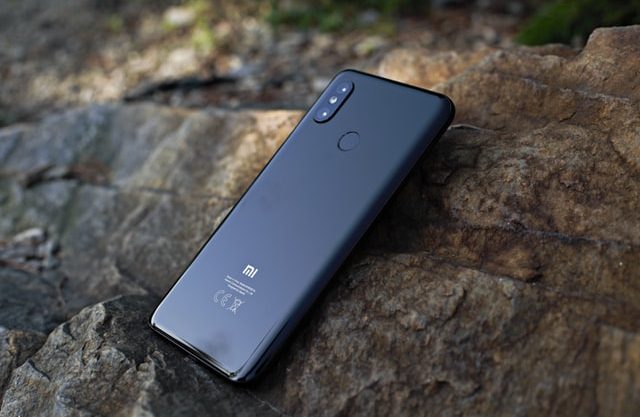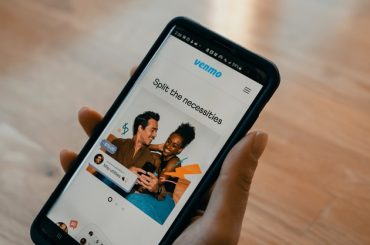The smartphone market in India is one of the most competitive markets in the country. Both local and international brands fight hard to position themselves in India, as the country is still developing and has a comparatively lower smartphone penetration than developed countries like the US, UK, or the European market.
The number of smartphone users in India is expected to be over 760 million in 2021 according to Statista, depicting the importance of these devices in our daily lives. From Mukesh Ambani down to your nearest chai-wala, everyone can be seen flaunting one. This number is fuelled further by the penetration of the internet in the rural areas, and the coronavirus pandemic shifting business meetings and classes online.
 You will find more infographics at Statista
You will find more infographics at Statista
When we talk about buying smartphones in India, one brand that definitely comes to mind is Xiaomi. Almost every second person would be using a Xiaomi phone so much so that in a crowded space, when a phone rings, one would not be able to distinguish their phones from others, because of the familiar Xiaomi ringtone. We have all seen the famous “Kiska baja” ads by the company.
The Chinese player, which has led the Indian smartphone market for three consecutive years, has a whopping 26% of market share as of Q1 of 2021, compared to the 20% market share captured by its long-rival, Samsung. That’s a steep rise for a company that had just 3% of the market in 2015. All thanks to the innovative marketing strategy of Xiaomi that stimulated this growth.
Regulatory filing access by AltInfo showed that Xiaomi posted a profit of Rs 401 crore in FY20 after sustaining Rs 148 crore loss a year earlier. In FY20 Xiaomi India clocked revenue of 38,196 crore which is roughly 13.5% of its global revenue of 2,82,000 crore.
Fun Fact: It’s a very famous fact that Xiaomi owns Mi and Redmi but do you know that there is an unknown Chinese company that owns OPPO, VIVO. OnePlus, Realme- BBK Electronics. If we combine their market share it’s actually BBK Electronics that rules the Indian smartphone market. What strategy did BBK Electronics use to rule the Indian smartphone market?
In this article, we will explore the marketing strategies that Xiaomi deployed to get to the top of the table
Understanding the demand of customers
The consumer needs in India are different from that of their western counterparts. What works in global markets, may not work in India. Xiaomi sells about 200+ products in China, while in India, the count is about 20+ products. The company has established a dedicated R&D center in Bangalore to specifically cater to Indian consumers.
The price elasticity of demand is high which means that consumers here are sensitive to pricing. Smartphones had not been able to reach the masses due to their high prices before the entry of affordable smartphones. Mr. Manu Kumar Jain, the CEO of Xiaomi India, identified this as a potential and aimed to make its foot stronger in the Indian market by targeting people who have been untouched by the telecom revolution, amidst the explosion of the Internet.
The tech giant’s mission statement, thus, came to be-
“At Xiaomi, we strive to create the highest quality products at the lowest possible prices to provide people with access to the necessary tools and services that connect them to the world and, ultimately, their dreams.”
Ever used a smartphone for more than 2 years? I don’t think so.
Over 52% of the smartphone users in India changed their primary smartphones after at least 2 years of use. 26.9% upgraded their phones within 1-2 years of use. The primary reason is to own the latest or a better smartphone. Xiaomi capitalized on this fickle behavior by frequently launching new products with new features.
Understanding the market and competition
Xiaomi surveyed the Indian market and carefully analyzed the competitive strategies used by Apple and Samsung. It concluded that both the brands had a loyal fan base and a robust operating system-iOS and Android, respectively. It picked up on these conclusions and started designing its own custom UI known as MIUI-based on Android.
In order to compete with the likes of Samsung, Apple, OnePlus, Xiaomi had to constantly work on improving its product. This was done by collecting feedback from users and incorporating it in the next higher version.
Once, Xiaomi was through with its OS, the next big task was to acquire early users. However, it didn’t want to spend huge amounts of money on advertising. Rather, the company wanted to build brand awareness by creating a loyal fan base.
So how did Xiaomi do it?
The company employed people to manage its social media and online forums. This team began engaging with the community. Their efforts proved fruitful the day Xiaomi launched the Mi 3 and the Flipkart website crashed in a matter of seconds!
Apart from this, Xiaomi also runs a lot of campaigns on social media to promote its smartphones and made effective use of word-of-mouth advertising.
Another reason for Xiaomi’s success was the slow collapse of India’s home-grown mobile brands due to the lack of 4G capability. There was a time when we saw Indian players like Micromax leading the market, but things took a drastic turn around 2016-17 when 4G was introduced in India.
By the time 4G had arrived in India, Chinese companies had already managed to successfully outfit cheap phones with 4G technology and were selling them back home! This made it easier for Xiaomi to transition phones from 3G to 4G overnight in India, ultimately killing the Indian brands that failed to adapt quickly.
Quality products at affordable prices
Xiaomi phones rate high on the value-for-money factor that they provide. They come power-packed with features and hardware that make Indians feel that they were getting more bang for their buck. Its flagship Redmi range of phones, for instance, typically start at Rs. 9,999/- rupees and goes up to Rs. 19,999/-.
Penetration pricing is a pricing strategy where the price of a product is initially set low to rapidly reach a wide fraction of the market and initiate word of mouth. The strategy works on the expectation that customers will switch to the new brand because of the lower price.
The way the company used penetration pricing helps explain their popularity in India-consumers were getting better features than before at rock bottom prices. In order to further cut costs, the company started to assemble its products locally in India to take advantage of the Make in India duty benefits.
Here is a review article by Gadgets 360 that has rated Xiaomi’s Redmi Note 10 an overall 9 out of 10 for value for money.
Xiaomi is basically an e-commerce company
Xiaomi largely sells its phones online and does not invest a lot in building an offline presence in the form of a traditional brick and motor retail store. In the Indian context, although it operates its own website to sell its products, Xiaomi also partnered with the biggest e-commerce platforms-Flipkart and Amazon to tap into their strong distribution channels.
This way, the company did not have to incur unnecessary capital expenditure and at the same time, making sure that their products reached the maximum number of smartphone lovers. A simple, yet effective move!
Creating Scarcity
Xiaomi’s flash sales help it reduce inventory costs and overproduction disasters. It is an exciting marketing strategy where Xiaomi uses discounts, time limits, and limited stocks as tactics to fascinate the customers.
While that makes it harder to get your hands on a new Xiaomi device, the company has managed to spin that into a positive, creating periodic hype as flash sales of a limited number of devices open up every week. Although the scarcity of a product results in disappointment, it nevertheless increases the value of the product by enticing the customers to buy it by invoking a feeling of FOMO.
Once a flash sale is completed, Xiaomi makes use of the quick sell-out in further social media postings, to grab more eyeballs. This is known as hunger marketing. Competitors including OnePlus and Realme have also started using flash sales.
Hunger marketing is a marketing strategy especially focusing on the emotions of human beings. Hunger marketing is a psychological strategy that focuses on the desire of consumers, making them hungry thus having a strong desire to buy products that other people also want to buy.
The Way Forward
Xiaomi’s share of the market has not been able to grow much beyond the 26-27% mark, signaling a plateau. The Korean tech company, Samsung is inching close behind; and newer brands like Realme have started to gain the limelight.

This could explain why Xiaomi is testing waters in the premium smartphone market, with the launch of a new range of phones called the K-20 series.
“A few years ago, the premium market was about three to four percent of the Indian smartphone market. This has now grown.” Xiaomi India’s director, Manu Jain, said in an interview with the Hindu newspaper. He also added that the company had set its sights beyond the affordable smartphone market.
Most recently the Mi 11 series graced this list with much hue and cry. In the advertisement below you will notice a premium feel. Xiaomi has customized its marketing strategy and market positioning for the premium market.
Xiaomi will need to keep pushing its limits and continuously evolve its marketing strategy in India, given that the competition remains fierce and no company has dominated it for too long.
-AMAZONPOLLY-ONLYWORDS-START-
Also, check out our most loved stories below

Why did Michelin, a tire company, decide to rate restaurants?
Is ‘Michelin Star’ by the same Michelin that sells tires, yes, it is! But Why? How a tire company evaluations became most coveted in the culinary industry?

Starbucks prices products on value not cost. Why?
In value-based pricing, products are price based on the perceived value instead of cost. Starbucks has mastered the art of value-based pricing. How?

Nike doesn’t sell shoes. It sells an idea!!
Nike has built one of the most powerful brands in the world through its benefit-based marketing strategy. What is this strategy and how Nike has used it?

Domino’s is not a pizza delivery company. What is it then?
How one step towards digital transformation completely changed the brand perception of Domino’s from a pizza delivery company to a technology company?

Why does Tesla’s Zero Dollar Budget Marketing Strategy work?
Touted as the most valuable car company in the world, Tesla firmly sticks to its zero dollar marketing. Then what is Tesla’s marketing strategy?

Yahoo! The story of strategic mistakes
Yahoo’s story or case study is full of strategic mistakes. From wrong to missed acquisitions, wrong CEOs, the list is endless. No matter how great the product was!!

Apple – A Unique Take on Social Media Strategy
Apple’s social media strategy is extremely unusual. In this piece, we connect Apple’s unique and successful take on social media to its core values.
-AMAZONPOLLY-ONLYWORDS-END-


















